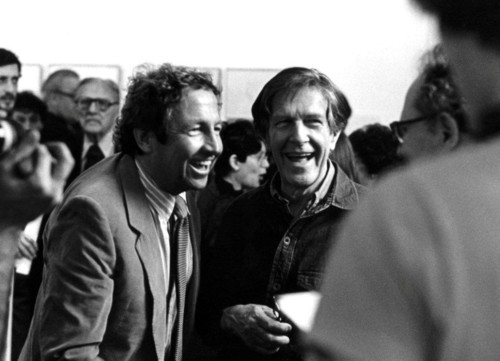Between 1954 and 1962, two American titans of art, Robert Rauschenberg and Jasper Johns, were both romantic and artistic partners. Their unique struggle and triumph emanates from their being lovers during pre-Stonewall America in a relationship well-known and yet downplayed, practically into censorship and erasure. Their relationship was an open secret, playing out in the time of Eisenhower and post-war America and the art world that was represented by Jackson Pollock. Johns was a neophyte of art when he met Rauschenberg, and both worked together in love and cooperation and collaboration, sharing ideas, negating the cliché of competition. It says something that even today their partnership, in every sense of the word, is still not more widely known and saluted for being so ahead of its time in many ways. Johns, who worked in painting and printmaking, and Rauschenberg, who did painting, sculpting, photography, printmaking, and papermaking, were multidimensional artists who compared their romance to Gertrude Stein and Alice B. Toklas, lesbian art icons of the early 20th century.
The art they made during their time together was transformational. They cocooned themselves into their own little universe of two, supporting and embracing each other, pushing each other forward creatively, aesthetically, and artistically, making masterworks along the way. In contrast to the Abstract Expressionist artists of the era like Jackson Pollock and Willem de Kooning, both Rauschenberg and Johns were making art out of symbols, an interesting subversion dovetailing with their relationship both in and out of the closet. They were some of the first to take conventional Americana symbols and subvert them into new meanings and understandings.
During this time, both artists hit their stride and entered the stratosphere. Johns produced “Flag,” a takeoff of the American flag, which was his first signature piece and is known as his masterpiece. This Neo- Dadaist rendering combines painting, plywood, and collage. Inspired by a dream he had, Johns painted thick drips over a collage made from scraps that included newspapers. Rauschenberg, at the time, started to make the Combines he would most be known for. Combing newsprint and materials from photographs, his collages took on a life of their own. From there, he began to add more and more objects of the mundane, giving the quotidian a spin into majesty.
As equality becomes more of the norm worldwide, it will be great for all of America to see more resonant couples who can live and work together more openly. It was their relationship that made both Rauschenberg and Johns the world-famous art masters they are considered to be today and put them into the history books.




































